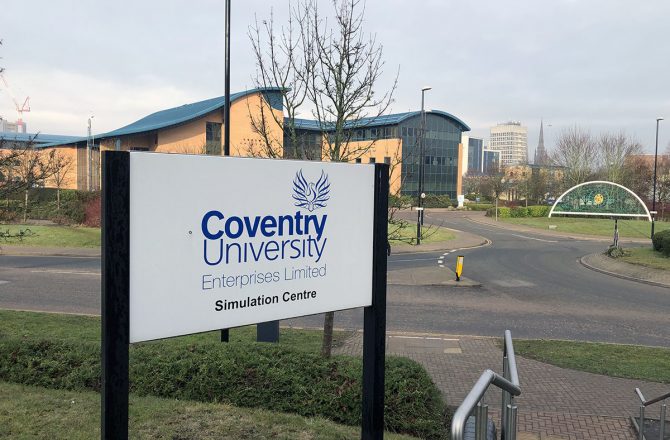
2nd International Partner Meeting
Project partnership met in Coventry on 11-12 February 2019. Partners from Coventry University (CU) prepared a presentation of Intellectual Output 1: Skills framework: results (O1).
Key findings here were:
– Current definitions of ‘entrepreneurship’ seem to have a dual focus: on one side setting up your own business (narrow), on the other side transversal skills for active citizenship, employability , et cetera (broader).
– The concept has gained much attention, but unfortunately much less concrete uptake, especially because a concrete strategy for implementation seems to be missing. The analysis further shows that not many European countries have a national entrepreneurship strategy, and that most strategies have been formulated on the regional level.
– During discussion it was mentioned that in some societies capitalisms doesn’t allow small-scale entrepreneurship to emerge. This project, however, has an educational design approach, leaving such political complications out of scope.
– Most countries recognize that experiential learning is key to acquire entrepreneurial skills and attitudes. Currently, most of these approaches are extra-curricular, and targeting selections of participants, so it is hard to establish links with (formal) education; in other words: they are not part of the system. Connections between schools and SME should become closer. Apprenticeships is considered a good way to establish such links. Apprenticeships should not merely be considered as opportunity for paid work, but also as a chance for acquiring future work.
Furthermore, CU reported the results of the survey carried out study into most important entrepreneurial skills (Report 2 for O1). The SOCCES framework was taken as basis. This framework already referred to important documentation drawn up during the EntreComp project (2016), a 10-years project carried out by the JRC of the EU. It appeared possible to combine the SOCCES framework (based on 5 skills areas) with the EntreComp ‘wheel’ (based on 3 competence areas: ideas and opportunities, resources, into action). Together with eight levels of complexity (the 4 EQF levels), each having three levels of mastery (foundation, intermediate, advanced) this yields 3 x 5 x 8 x 3 = 360 learning outcomes (although I recall Amela mentioning 442 outcomes, so I probably got something wrong here !?). The EntreComp framework also provides descriptions of each of the learning outcomes / objectives with criteria for grading mastery.
CU setup and carried out a survey study. A questionnaire was developed, based on the frameworks mentioned, translated into partner languages (except for dutch) and filled in on line by 127 respondents (70 students, 21 teachers, 21 members of construction organisations) across the 5 partner countries. When analysing the data, CU did a nice job by checking if less ‘popular’ items (scored lower) could be incorporated under ‘top answers’ (scored higher) for each category, and finally managed to come up with a more inclusive (better width, better representation, better operationalisations) categorisation of 5 key competence clusters for entrepreneurship in construction, so nice work! These 5 clusters can from now on be the basis for further designing the 5 (competences) x 3 (mastery levels EQF 3, 4, 5) mini-games.
The 5 competence clusters that thus could be distilled are:
- Ethical and sustainable thinking, incl. reflection on sustainable goals and responsibilities (Ideas and opportunities area);
- Mobilising and inspiring others, incl. self-awareness and –efficacy;
- Motivation and perseverance, incl. maintaining focus and showing resilience (both Resources area);
- Learning from experience, incl. planning and management; and
- Taking the initiative, incl. initiation and taking up new challenges (both Into action area).
Now that results for O1 are ready for reporting, the next step in the project will be to further select and elaborate case leads for each of these five clusters (O2), and then start writing case scenarios and –content for each level (O3).
